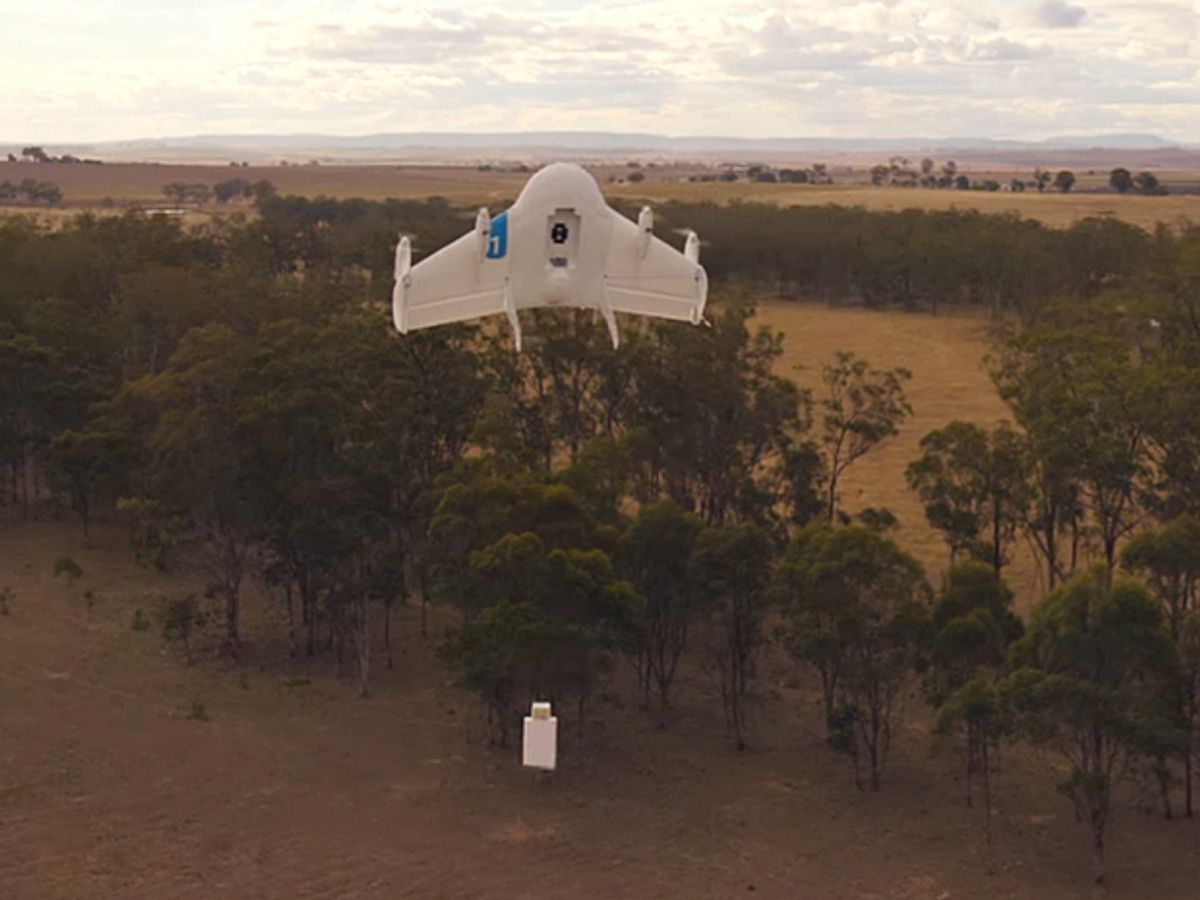Last week Google pulled back the curtain on its Project Wing, an effort to develop small drones that can deliver packages. The notion of being able to deliver small payloads in this way has been on lots of people’s minds since December of last year when Amazon revealed its own efforts to whisk packages to its customers using small drones, a service-to-be that it calls Prime Air. Even before that, the Silicon Valley startup MatterNet announced its plans to use similar technology to help move materials around places lacking good roads. And one San Francisco company claims it will offer such a service very soon to residents in urgent need of pharmacy supplies in the city's Mission district, despite the U.S. Federal Aviation Administration's position that commercial use of even the smallest drones is forbidden.
Could such drone-based delivery services really be practical?
There are a raft of reasons to think not, but I’d like here to suspend disbelief for the moment and examine one narrow technical concern: Is a multirotor really the ideal delivery vehicle? While music-rich videos tend to make their flight look effortless, in truth these things make a racket and use a lot of power to earn their maneuverability. The need for substantial power and reasonable range in turn necessitates beefy, expensive batteries, which wouldn’t hold up all that long in constant commercial use. What’s more, helicopters are, in general, pretty slow.
The people behind Google’s Project Wing were obviously sensitive to these issues and have sidestepped them to some extent by adopting a kind of aircraft known as a “tail sitter.” It can take off and land vertically like a helicopter, but in flight it rotates 90 degrees and flies horizontally through the air supported by its fixed wings. Full-scale tail-sitter aircraft are not common, but they have been around for many decades. And others before Google have developed tail-sitter drones, including the KU Leuven VertiKUL, Aerovel Flexrotor, and the Quadshot.
The engineers behind Project Wing decided that landing to drop off a package would not be a good idea—and common sense only affirms their conclusion. Who would want to risk letting people on the ground get close to a bunch of spinning blades? Even if that danger were not present, landing at the destination would make the vehicle that much more prone to accidents or intentional mischief.
Google has come up with a curiously complex solution, though. After arriving at its destination, the tail-sitter drone transitions from horizontal flight to hover, lowers its payload to the ground on a slender line, releases it, and winches the line back up. The strategy reminds me a little bit of NASA’s “sky crane” solution to putting the Curiosity rover softly down on Mars.
Mars, though, doesn’t have much of an atmosphere, whereas anywhere Google’s drone might operate would, which raises the obvious question: Why not just airdrop the package, using perhaps a parachute or streamer to slow its descent? According to the exclusive in-depth coverage of Project Wing published by The Atlantic, Google considered that, but “[t]here was too much wind interference and they struggled with accuracy.” Perhaps, but this seems an odd explanation.
After all, a fixed-wing aircraft used as a delivery drone could airdrop its payload at just above tree level—say, 30 meters above ground level. An attached parachute or streamer could be designed not to unfurl immediately, so that wind effects were minimized. And engineers from Google of all places shouldn’t be put off by the thought of modeling the wind so it can be compensated for, at least to some extent.
My gut feeling, for whatever that’s worth, is that the accuracy of an airdrop from a low-flying drone could be readily reduced to less than 10 meters. I wouldn’t be at all surprised to learn that it could be done much more precisely. Back in 2011—eons ago in drone tech—students from the University of North Dakota managed to get a drone to airdrop a package to within 11 feet (4 meters) of its target—and that was from 1000 feet above ground in an 8-knot wind. Imagine what can be done today from a tenth the height.
Yes, my vision of a proper delivery drone does not match with Amazon’s or Google’s. Give me the Burrito Bomber any day.
David Schneider is a former editor at IEEE Spectrum, and continues to contribute Hands On articles. He holds a bachelor's degree in geology from Yale, a master's in engineering from UC Berkeley, and a doctorate in geology from Columbia.



